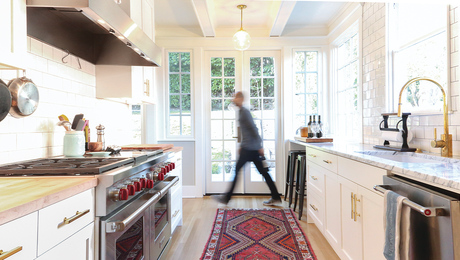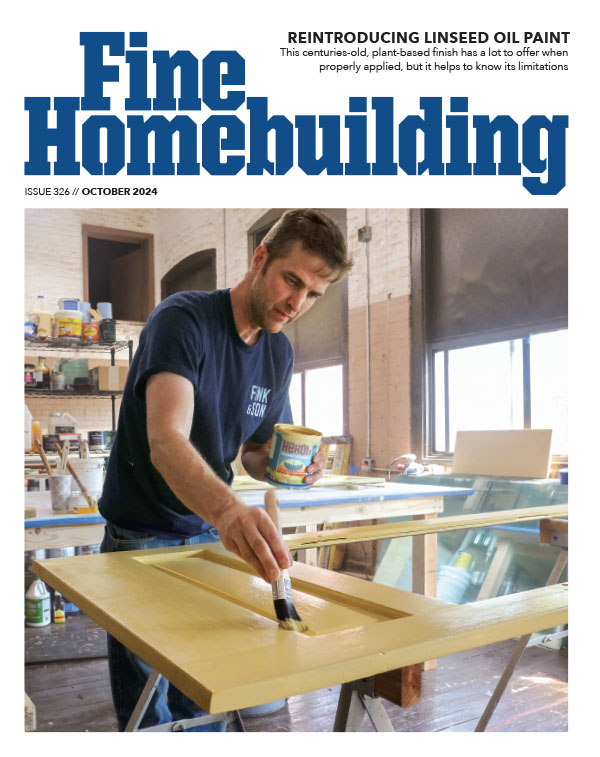i will be remodeling an old brick house with plaster walls. The interior walls that are attached directly to the brick are my question. i have two layers of brick with a gap or air pocket between the two. the plaster is pressed directly to the interior brick. i have some cracks and at least 4 layers of paint with some of that cracking or breaking off. the house has been vacant for at least 3 years. i have heat in it now. i noticed when i cut the heat on and it was cold outside the walls would sweat and actually have streaks of water running down. i suppose from condensation. trying to repair cheep but good. can i just open the cracks, tape and skim all walls? will the condensation continue and will that effect my new skimmed walls? should i cover with paneling or sheetrock instead? thanks for your suggestions in advance.
shane


















Replies
It sounds to me like water is getting in through the brick, mortar, window jam or a million other ways. Any plaster repair will fail unless you stop the water infiltration.
Coming to you from beautiful Richmond, Va.
Nah, if this is really an interior wall the water is probably from condensation on the cold plaster/brick.
I'm sorry, I must have missed the interior part! I was thinking exterior walls!Coming to you from beautiful Richmond, Va.
Joey, you know what, I had to read the first post twice and I think he was referring to the interior of an outside wall. From what he discribed the water dripping down the wall is from condensation and the fix would be as somebody already suggested insulation.
Tomchark, educate me here. I see lots of plaster on brick but have not seen condensation problems like that. What is causing it?Coming to you from beautiful Richmond, Va.
Prospero just ate my post and wouldn't let me back into this thread.
Here is what stage time wrote:
The interior walls that are attached directly to the brick are my question. i have two layers of brick with a gap or air pocket between the two. the plaster is pressed directly to the interior brick.
It sounds to me he was referring to the interior face of an exterior wall, Wish he could confirm.
He went on saying:
i have heat in it now. i noticed when i cut the heat on and it was cold outside the walls would sweat and actually have streaks of water running down.
That's exactly the same situation when Clay wrote:
Like Dan said. I've got a couple of rentals with exterior brick and liner course adobe with 3 coat plaster. Just like turning on a faucet when it's cold outside.
I see that you are from Va so you probably don't have to deal with a problem which is so familiar to us. When it's really cold outside, masonry being such a good conductor would drop the temperature of the inside of an outside wall to below the dew point of the humidity in the house, condensation results.
Thanks for the education Tomchark.Coming to you from beautiful Richmond, Va.
thanks for the dicussion. it is the interior face of an exterior wall. i to live in VA. southwestern part in the mountains. my father is a builder and he thinks the dampness on the interior face of the walls would not be there if the heat were on all the time. i tend to think that if a renter turned the heat up high or the weather got cold fast that the problem might occur. both causing temperature change fast and in the opposite directions. hope i am explaining this ok. i did not realize the R value would be so low on a brick/plaster wall. thanks
Take a glass with Ice and water and watch it sweat in a warmer enviroment. It's just the way it is. Raining walls Waaaaaaaaaa. Plus if you add some showers and some cooking and and Waaaaaaaa my walls are raining. Cheaper then the real cure a dehumidifier. The tighter you try to make the house the worse it gets.
It might be a little more than R-1 but it's still really not much. If you need to I can look it up for you. Plus it sucks the heat out of your body, always have that cold feeling.
Clay
Hey Joey, if you ask and if I know, you are welcome.
Like Dan said. I've got a couple of rentals with exterior brick and liner course adobe with 3 coat plaster. Just like turning on a faucet when it's cold outside. Patchs will hold up if done properly. R-value about 1. If your ambitious 2" Iso foam and sheetrock will get you R-14 , or your going to have to go to a full stick wall if you really want to go all the way, either way it is a piece of work.
I don't know how to fix your moisture problem (I live in the desert), but I have a entirely brick house and and I fix the plaster with quick set mud and fiberglass window screen. I've been using this method for years and have never had a crack open up at all. It's much cheaper than that mesh stuff that is sold for this pupose, and way easy to float over with a knife. If you have an very large hole use expanded meatal lath on the first coat then screen over the second.
Jason
He's right that bricks have no R value, but they do have heat mass--just like concrete. So if you get them heated up they will stay that way and also heat objects in the room too. A brick house is perfect for a radiant heat system. If you have alot of brick facing the sun that also helps.
Jason
Ya man but you be payin for that heat/ mass and they perform equally well on both sides and it be cold out there.